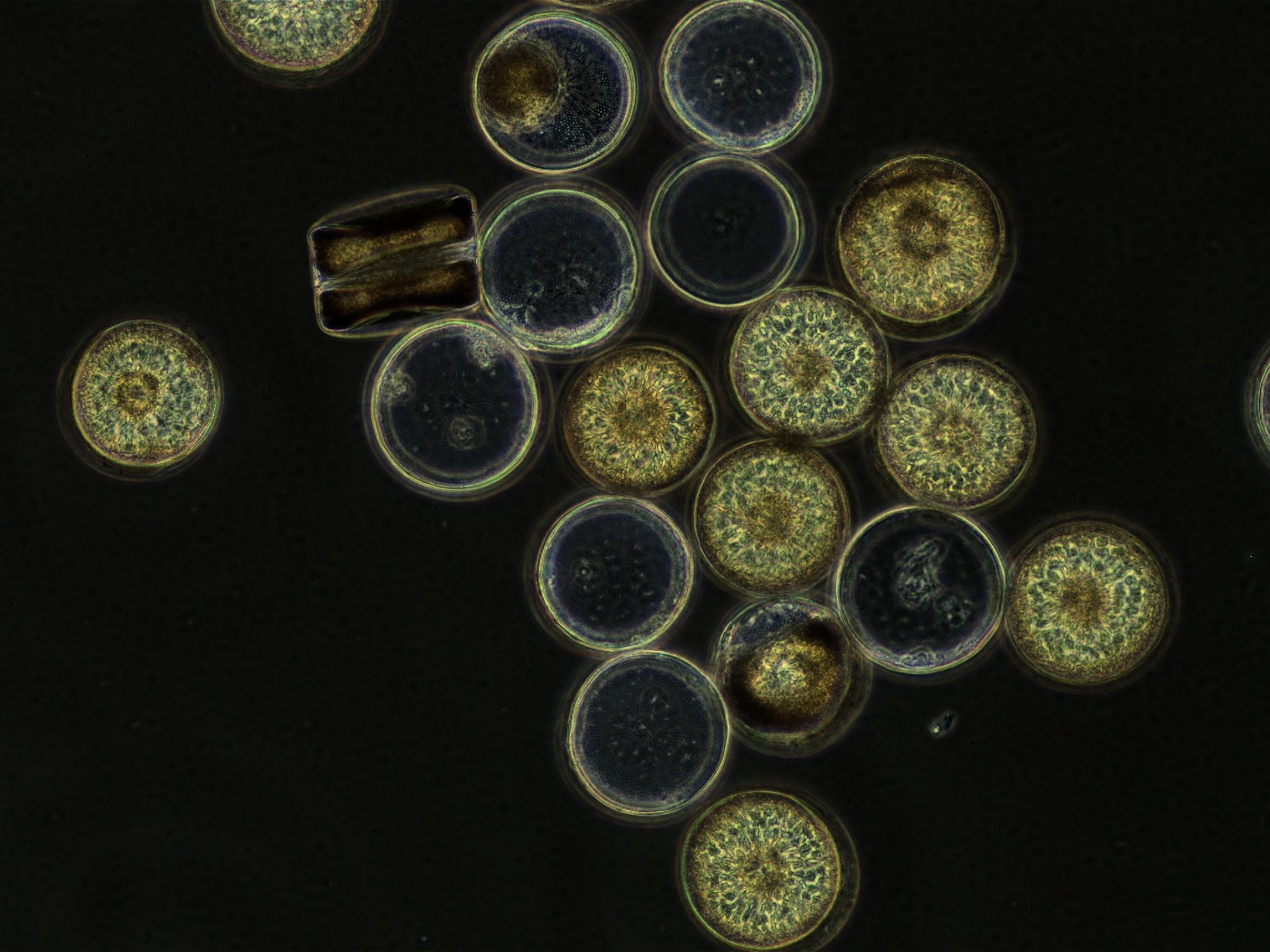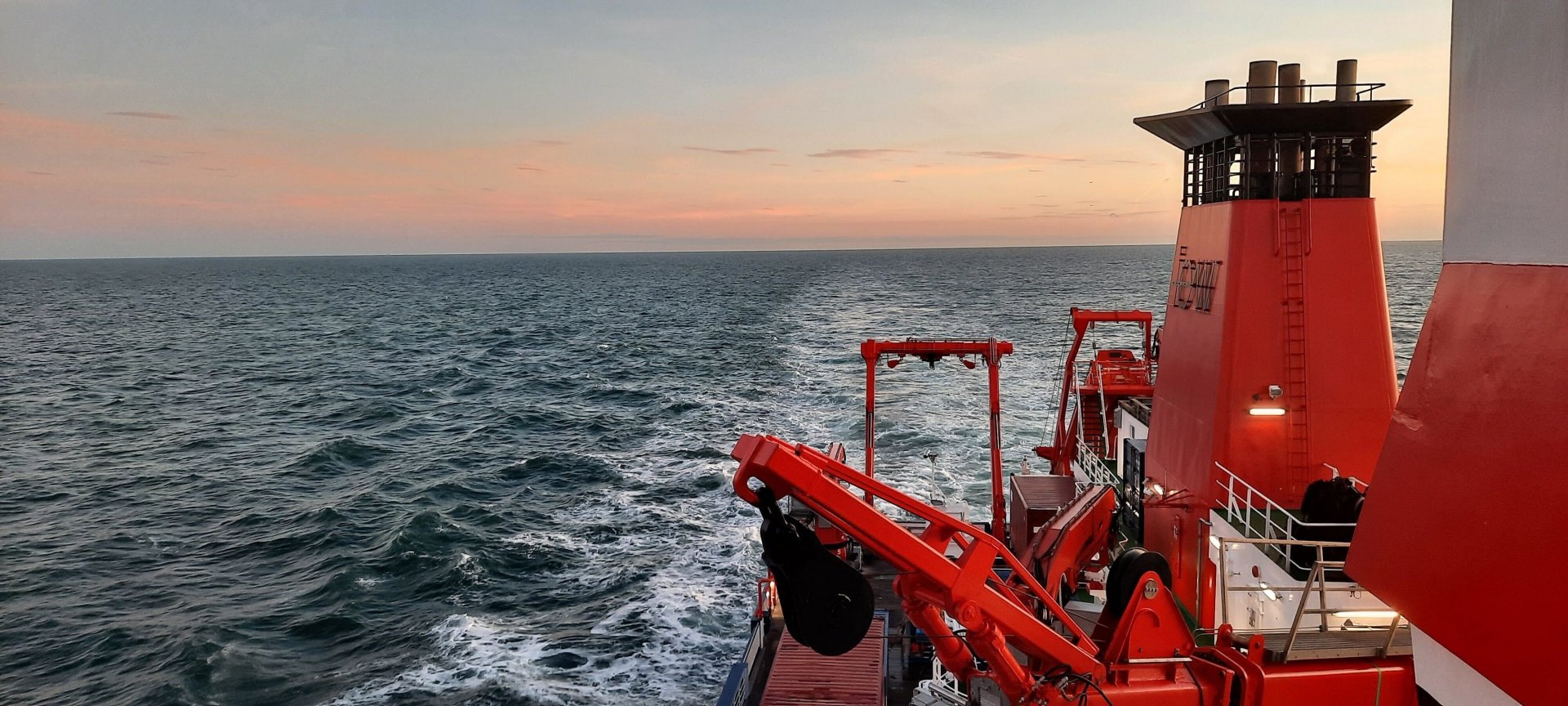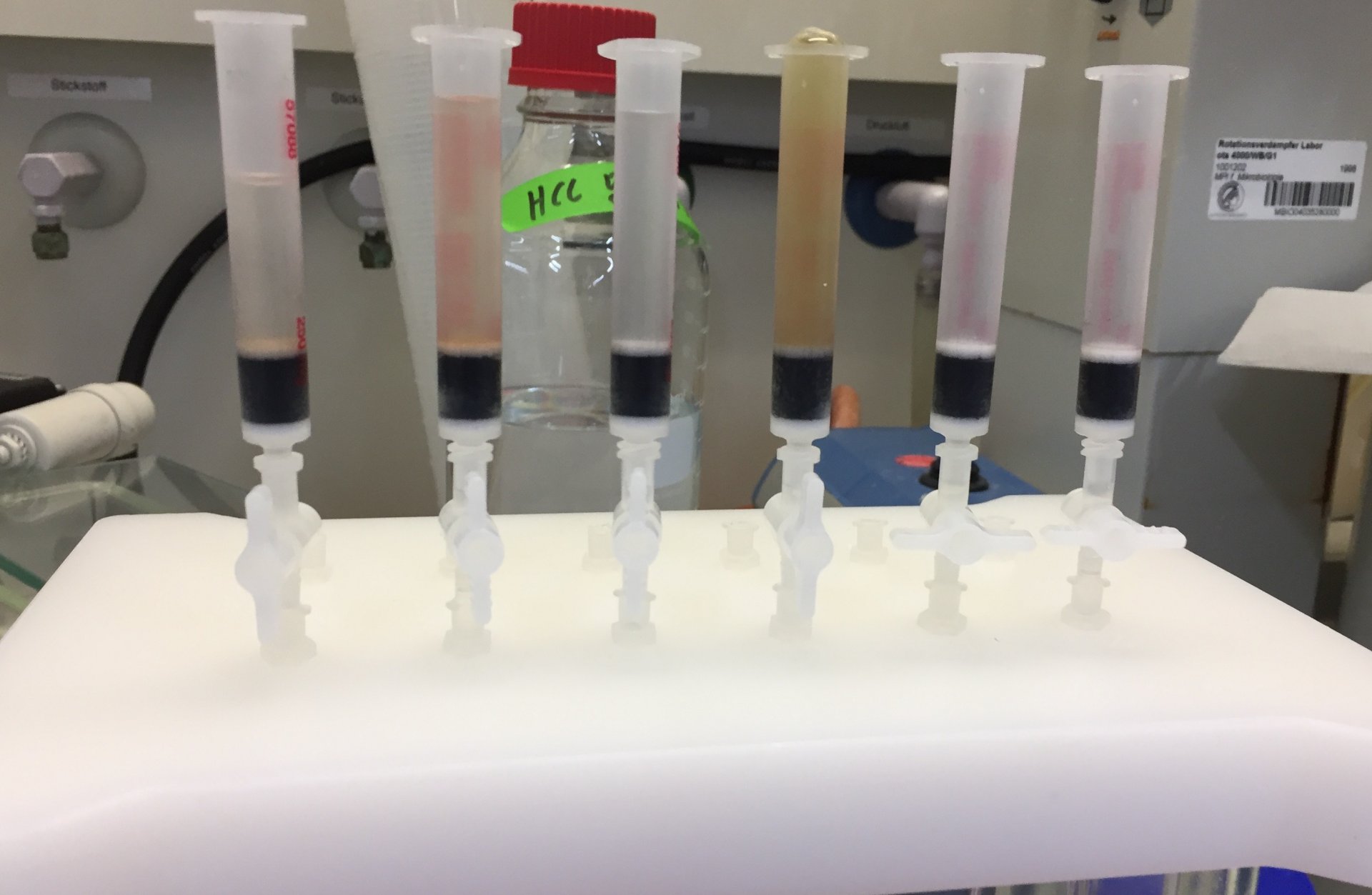Marine Glycobiology
Glycans and the marine environment

Algal polysaccharides are an important component of the flux of carbon rich organic matter from the surface ocean into its depth. Most marine polysaccharides are synthesized at the surface by microalgae whose annual production is on par with all plants on land even though they only account for about 1-2% of the marine biomass. This competitive production is caused by intense growth and short lifespans; microalgae live fast and die young (weeks) compared to terrestrial plants (years). They pursue a boom and bust style of life with rapid growth and abrupt population crashes whereby algal blooms can appear and disappear within weeks or even days. During growth and upon death microalgae secrete copious amounts of polysaccharides.These are known to spontaneously aggregate into particles, which can more rapidly sink through the water column and inject carbon into deeper waters (the biological pump). Bacteria colonize particles and use enzymes to recycle polysaccharides leading to intense bacterial growth and particle dissolution. This way the interplay between particle formation and its dissolution may regulate the biological pump and dictate how much carbon is stored in the oceans. Despite the relevance of this process the structures of algal polysaccharides and their recycling by marine microbes remain a mystery. This way the interplay between particle formation and its dissolution may regulate the biological pump and dictate how much carbon is stored in the oceans.Despite the relevance of this process the structures of algal polysaccharides and their recycling by marine microbes remain a mystery. This way the interplay between particle formation and its dissolution may regulate the biological pump and dictate how much carbon is stored in the oceans. Despite the relevance of this process the structures of algal polysaccharides and their recycling by marine microbes remain a mystery.
Liquid chromatography mass spectrometry (LC-MS) as a tool to characterise marine glycans
Liquid chromatography tandem mass spectrometry (LC-MS/MS) could be a powerful technique to characterise marine glycans, shedding light on their role in the carbon cycle. Common methods for characterisation of marine glycans involve acid hydrolysis, which degrades polysaccharides to monomers. This non-specific hydrolysis destroys information about sequence, connectivity and configuration. LC-MS/MS on the other hand captures structural information and can resolve isomers. Oligosaccharides generally fragment during MS/MS by cross-ring and glycosidic bond cleavage, as described by the nomenclature of Domon and Costello (1988). The former locates modifications and can diagnose connectivity and configuration. Glycosidic fragments inform sequence and branching, and partially describe composition. Hexose, pentose and modified monomers can be distinguished,m/zvalues. Chromatographic separation is required to differentiate structural isomers. In hydrophilic interaction liquid chromatography (HILIC), retention is influenced by size, charge, composition, connectivity and configuration, providing a high potential for isomeric separation of glycans. However, LC-MS of marine glycans is hindered by the low ionization efficiency of neutral sugars, which can constitute up to half of freshly produced DOM (Aluwihare & Repeta, 1999, Hama & Yanagi, 2001, Hama et al., 2004), the low tolerance for salt in MS, and the lack of any existing systematic approach to locate ions of diverse glycans within large MS datasets. This has led to the underutilization of LC-MS as a tool within the marine glycobiology field. We are, in collaboration with the Metabolic Interactions group, working on developing methods to enhance and streamline characterisation of marine glycans by LC-MS.
Our methods for analysis of marine glycans

